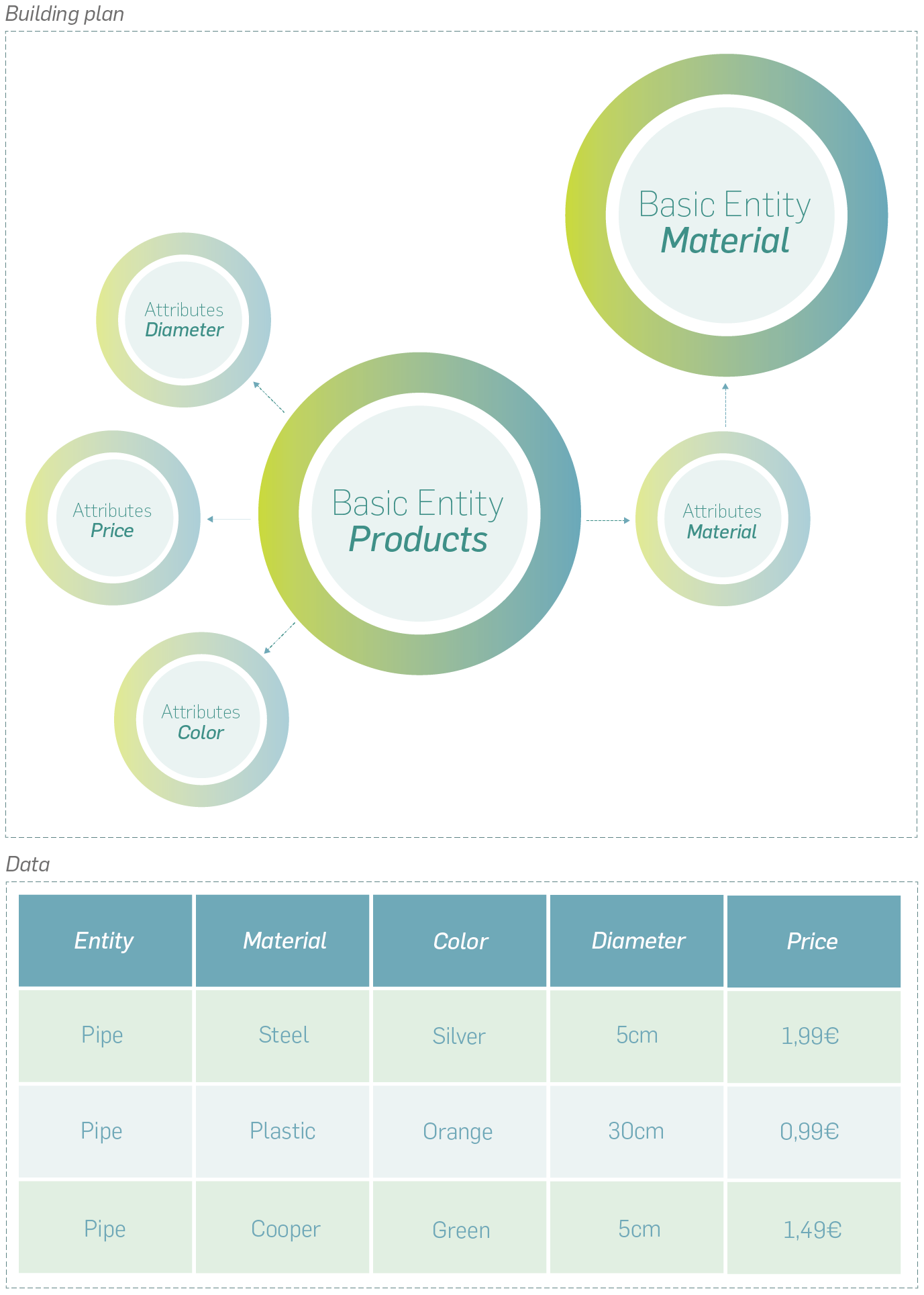open bi enables you to map the complex data structures and relationships of your individual project. With the help of "entities", your scenario to be implemented can be abstracted. open bi can thus be flexibly applied in any industry and in any field.
Data modelling
Objects and object relations
An entity describes an object in the real world. In open bi, the "base entity" forms a "blueprint" for this object. Each base entity has certain properties, such as a name and a price. These properties are called "attributes" of the base entity.

In open bi there are system attributes that are already contained in each base entity. These include name, short description, creation date and modification date. All other attributes can be selected by the user for each new base entity. The attributes can also have different data types. Data types are, for example, continuous text, number, date or even a base entity. Relations between entities can be implemented via the base entity.
open bi also delivers system base entities. These are, for example, "country" (with information, i.e. attributes, such as "currency" or "language") and other industry-specific ones, such as "active ingredients" of the medicine or "building materials" of the construction industry. These can be accessed within the framework of your web project, which reduces your own data maintenance effort and helps you reach your goal more quickly.
The data structures can be created intuitively via the graphical user interface of the open bi configurator. The actual data, i.e. entities, can then be entered manually or uploaded via an Excel file. But they can also be read out or written back programmatically, for example in connection with the open bi CMS.
Application using the example of CMS and artificial intelligence
For example, if you want to implement a shop system with open bi, each product is represented as an entity. The individual attributes of the product can be specifically defined and filled with your own product data. In the web shop, this data can then be read out and, for example, ordered quantities can be written back into the system. Through open bi HTML Items, the display of this data can be implemented quickly. Processes such as registration or ordering can also be integrated using ready-made templates.
In the field of artificial intelligence, entities can be employed to "understand" data structures and to make them accessible with the use of language, for example. More information on this can be found on the Subpage on Artificial Intelligence.
Data storage
An MS SQL database is automatically created for data storage. The open bi server automatically creates, reads and writes back the data to or from this database. The section Data-connectivity explains this in more detail.